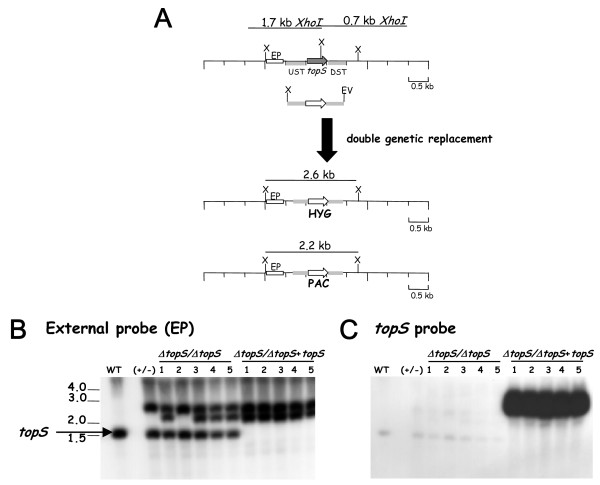Figure 1.
Construction of L. major topS-null mutants (ΔtopS::HYG/ΔtopS::PAC), by double targeted gene replacement. A) Strategy for targeted gene replacement. (Upper) The topS gene locus, the location of the upstream (UST) and downstream (DST) segments used to target homologous recombination and 1.7-kb XbaI restriction fragments. The disruption constructs are shown immediately below, including the UST and DST fragments, the XbaI and EcoRV terminal polylinker restriction sites. The targeted gene replacement event is indicated below the thick arrow, showing the structure of the resulting chromosomal locus and the predicted 2.6-kb and 2.2-kb XbaI restriction fragments that are diagnostic of the correct homologous integration events. X, indicate XbaI restriction sites. Generation of the null-mutant required a second targeted gene replacement using a similar gene disruption cassette containing a PAC marker. B) Southern blot containing 10 μg of genomic DNA from WT parasites, heterozygous knockout line after integration of the HYG gene disruption construct (+/-), (ΔtopS/ΔtopS) after integration of the PAC, and (ΔtopS/ΔtopS+topS)after integration of the PAC in a clone previously transfected with an episomal vector pXG-topS carrying the topS genehybridized with a radiolabeled probe represented by a white box and located outside of the disruption region (external probe, EP). C) The same blot shown in B after elution of the EP and rehybridization to the topS probe. The numbers indicate the positions and sizes (kb pairs) of DNA molecular weight markers.

